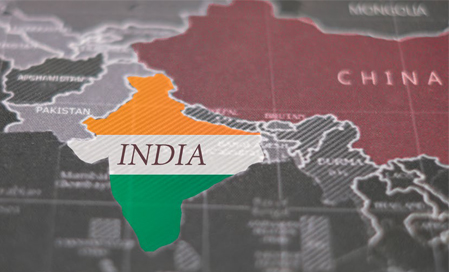The Nineteenth-Century Anglo-Indian Opium Trade to China and its Lasting Legacy
Main Article Content
Keywords
Opium wars, Anglo-Indian history, commodity trade, XIX century, socio-political effects and outcomes
Abstract
In recent years, two apparently different and unconnected problems have received repeated attention from global news outlets, namely the opioid crisis and the pro-democracy movement in Hong Kong. The opioid crisis, which is especially catastrophic in the United States, involves the over-prescription and abuse of synthetic opioid painkillers such as oxycontin and fentanyl (Felter, 2020). The pro-democracy movement in Hong Kong involves legions of protesters, many of them university students, taking to the streets against what they see as the erosion of their civil liberties at the hands of the mainland Chinese government (Perper, 2019). How can these two issues possibly be connected? This paper tells the story of how the world's first great opioid crisis occurred in nineteenth-century China, and how the drug trafficking British thwarted the Chinese government's attempts to stop drug imports, fighting two wars in the process. Upon conclusion of the first of these wars, China was forced to cede the territory of Hong Kong. This British colonial outpost became the principle entrepôt for British opium entering the Chinese market. Over the next century and a half, Hong Kong grew into one of the world's most dynamic commercial cities, and its citizens enjoyed liberties under British rule that were not available to the mainland Chinese population. Thus, the legacy of the opium wars and the British opium trade to China is still very much with us today.
Downloads
References
Bauer, Rolf. (2019). The peasant production of opium in Nineteenth-century India. Leiden; Boston: Brill
Berenguer-López, F. (2018). The Blunders in the Western cross-cutting policies in Afghanistan: The Opium economy as a case of study. UNISCI Discussion Papers. 47. 10.31439/UNISCI-8.
Brown, R. H. (2002). The Opium Trade and Opium Policies in India, China, Britain, and the United States: Historical Comparisons and Theoretical Interpretations. Asian Journal of Social Science, 30(3), 623. https://doi.org/10.1163/156853102320945420
Byrd, W., & Ward, C. (2021). DRUGS AND DEVELOPMENT IN AFGHANISTAN [Ebook]. Retrieved from http://documents1.worldbank.org/curated/en/156391468740439773/pdf/30903.pdf
Chalk, P. (2000) Southeast Asia and the Golden Triangle's Heroin Trade: Threat and Response, Studies in Conflict & Terrorism, 23:2, 89-106, DOI: 10.1080/105761000265548
Chandra, Siddharth (2008). “Economic Histories of the Opium Trade”. EH.Net Encyclopedia, edited by Robert Whaples. http://eh.net/encyclopedia/economic-histories-of-the-opium-trade/
Chang, Hsin-pao. (1970). Commissioner Lin and the Opium War. New York: W.W. Norton
Chiculture (n.d.) The Treaty of Nanking and its Aftermath https://chiculture.org.hk/en/photo-story/112
Deming, S. (2011). The Economic Importance of Indian Opium and Trade with China on Britain's Economy, 1843-1890. Economics Working Paper, 25(1), 4. https://www.whitman.edu/economics/Workingpapers/content/WP_25.pdf.
Derks, H. (2012). TEA FOR OPIUM VICE VERSA. In History of the Opium Problem: The Assault on the East, ca. 1600-1950 (pp. 49-86). LEIDEN; BOSTON: Brill. doi:10.1163/j.ctv4cbhdf.11
Farooqui, A. (2016). The Global Career of Indian Opium and Local Destinies. Almanack, 23, 52–73. https://doi.org/10.1590/2236-463320192216
Feige, C., & Miron, J. (2008). The opium wars, opium legalization and opium consumption in China. Applied Economics Letters, 15(12), 911–913. https://doi.org/10.1080/13504850600972295
Felter, C. (2020). The U.S. Opioid Epidemic. Retrieved 24 March 2021, from https://www.cfr.org/backgrounder/us-opioid-epidemic
International Research: Investigación de Mercado en Hong Kong (n.d.) https://www.sisinternational.com/investigacion-de-mercado-en-hong-kong/
Issue brief: Reports of increases in opioid- and other drug-related overdose and other concerns during COVID pandemic. (2021). Retrieved 21 March 2021, from https://www.ama-assn.org/system/files/2020-12/issue-brief-increases-in-opioid-related-overdose.pdf
Kalipci, M. (2018). Economic Effects of the Opium Wars for Imperial China: The Downfall of an Empire. Abant Izzet Baysal University Journal of Social Sciences / Sosyal Bilimler Enstitüsü Dergisi, 18(3), 291-304.
Lacroix, Xavier (2020). Unequal Treaties with China. Encyclopédie d’histoire numérique de l’Europe, ISSN 2677-6588. https://ehne.fr/fr/node/12502
Little, B. (2019). How Hong Kong Came Under 'One Country, Two Systems' Rule. Retrieved 21 March 2021, from https://www.history.com/news/hong-kong-china-great-britain
Madancy, J. (2001). Unearthing Popular Attitudes toward the Opium Trade and Opium Suppression in Late Qing and Early Republican Fujian. Modern China, 27(4), 436-483. http://www.jstor.org/stable/3181326
McCoy, A. W. (2000). From Free Trade to Prohibition: A Critical History of the Modern Asian Opium Trade. Fordham Urban Law Journal, 28(1), 307–350.
Opiate Addition Resource: Opium Dens Images (2019) https://www.opiateaddictionresource.com/media/images/opium_dens/
Paulès, X. (2008). Anti-Opium Visual Propaganda and the Deglamorisation of Opium in China, 1895—1937. European Journal of East Asian Studies, 7(2), 229-262. http://www.jstor.org/stable/23615404
Paulès, X. (2009). Opium in the City: A Spatial Study of Guangzhou's Opium Houses, 1923-1936. Modern China, 35(5), 495-526. http://www.jstor.org/stable/27746934
Perper, R. (2019). Behind the barricades: Hong Kong protesters share what happened during the violent clashes with police on university campuses. Retrieved 24 March 2021, from https://www.insider.com/timeline-hong-kong-chinese-polytechnic-university-riot-police-pictures-interviews-2019-11
Rastogi, N., & Trivedi, M. (2021). PESTLE TECHNIQUE – A TOOL TO IDENTIFY EXTERNAL RISKS IN CONSTRUCTION PROJECTS [Ebook]. Gwalior. Retrieved from https://www.irjet.net/archives/V3/i1/IRJET-V3I165.pdf
Richards, J. (2002). Opium and the British Indian Empire: The Royal Commission of 1895. Modern Asian Studies, 36(2), 375-420. http://www.jstor.org/stable/3876660
Rush, J. (1985). Opium in Java: A Sinister Friend. The Journal of Asian Studies, 44(3), 549-560. doi:10.2307/2056267
Terry, C. (1931). The Development and Causes of Opium Addiction as a Social Problem. The Journal of Educational Sociology, 4(6), 335-346. doi:10.2307/2961615
UKEssays. (May 2020). What Was the Role of the Opium War in the Fall of the Qing Dynasty?. https://www.ukessays.com/essays/history/what-was-the-role-of-the-opium-war-in-the-fall-of-the-qing-dynasty.php?vref=1
United States Drug Enforcement Administration. (2020). Fentanyl - Drug Fact Sheet [Ebook]. Retrieved from https://www.dea.gov/documents/2020/06/05/fentanyl-drug-fact-sheet
United States Drug Enforcement Administration. (2020). Oxycodone - Drug Fact Sheet [Ebook]. Retrieved from https://www.dea.gov/sites/default/files/2020-06/Oxycodone-2020.pdf
Yangwen, Z. (2005). The Social Life of Opium in China. Cambridge: Cambridge University Press. doi:10.1017/CBO9780511819575

